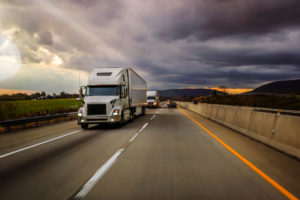Smart regulation and smart technology must go hand in hand
REGULATING A COMPLEX new technology is hard, particularly if it is evolving rapidly. With autonomous vehicles just around the corner, what can policymakers do to ensure that they arrive safely and smoothly and deliver on their promise?
The immediate goal is to make sure that AVs are safe without inhibiting innovation. In America, experimental AVs are allowed on the roads in many states as long as the companies operating them accept legal liability. Chris Urmson of Aurora says American regulators have got things right, working closely with AV firms and issuing guidelines rather than strict rules that might hamstring the industry. “It’s important that we don’t leap to regulation before we actually have something to regulate,” he says.
At the other end of the spectrum, Singapore’s government has taken the most hands-on approach to preparing for AVs, says Karl Iagnemma of nuTonomy, an AV startup that has tested vehicles in the city-state. For example, it has introduced a “driving test” that AVs must pass before they can go on the road. This does not guarantee safety but sets a minimum standard. The city of Boston has done something similar, requiring AVs to be tested in a small region before roaming more widely.
Elsewhere, regulators have permitted limited testing on public roads but want to see more evidence that the vehicles are safe before going further, says Takao Asami of the Renault-Nissan-Mitsubishi alliance. “Simple accumulation of mileage will never prove that the vehicle is safe,” he says. Instead, regulators are talking to carmakers and technology firms to develop new safety standards. Marten Levenstam, head of product strategy at Volvo, likens the process to that of developing a new drug. First you show in the laboratory that it might work; then you run clinical trials in which you carefully test its safety and efficacy in real patients; and if they are successful, you ask for regulatory approval to make the drug generally available. On this analogy, autonomous cars are currently at the clinical-trial stage, without final approval as yet.
What form would that approval take? Eventually, it will mean formal certification of vehicles capable of operating fully autonomously, so they can be offered for sale. But initial approval is likely to be granted to operators of specific robotaxi fleets, rather than vendors of particular vehicles, suggests Mr Levenstam, because fleet operators will monitor all vehicles closely to ensure and maintain safety. Even this will be a calculated risk. It is not possible to prove that a new drug is entirely safe, but the risk is worth taking because of the benefits the drug provides. It will be the same for AVs, he suggests. After all, the status quo of human-driven vehicles is hardly risk-free.
Mr Asami draws another analogy, with aviation. “Black box” data recorders and careful testing have enabled air transport to evolve, despite crashes, because passengers know safety is taken seriously. In fact, America’s National Transportation Safety Board (NTSB) has started applying its aviation expertise to autonomous vehicles. In many ways AVs are more complex than aircraft, says Deborah Bruce of the NTSB, because they are closely surrounded by other things that move in unpredictable ways.
But medicine and aviation have global (or at least regional) regulatory standards, whereas AVs do not. The current patchwork of regulation will have to be simplified if the technology is to be widely deployed. “Uniformity is the friend of scalability,” says Mr Iagnemma. Questions of insurance and liability will also have to be worked out. Amnon Shashua of Mobileye worries that because of today’s regulatory uncertainty, fatal accidents involving fully autonomous vehicles could plunge the industry into legal limbo, or kill it altogether. He has proposed a set of rules that define how a car should respond in all 37 scenarios in the 6m-entry accident database maintained by NHTSA, America’s car-safety regulator, and would like to see these rules adopted as an open industry standard. That would absolve carmakers from making implicit ethical choices in their software while leaving room for innovation in other areas. Mr Iagnemma thinks it is a good start. Without such standards, he says, every company will develop its own way of translating the rules of the road, devised for humans, into a code that can be followed by machines.
Political potholes ahead
The risk of a backlash seems real enough. A survey by Advocates for Highway and Auto Safety, a consumer lobby, found that 64% of Americans were worried about sharing the road with AVs. In another survey, by the Pew Research Centre, 56% of Americans said they would not ride in a self-driving vehicle (see chart). Seeing AVs in action will be an important element of building public trust. In cities where AVs are commonplace, drivers have got used to them. Uber, Waymo and others are also starting to provide robotaxi rides in limited areas, so people can discover that riding in an AV is thrilling for the first 30 seconds and then quickly becomes boring. “But that’s the response we really want,” says Noah Zych of Uber, because it means riders feel safe.


Assuming that AVs can be shown to be safe, regulators will face a second challenge: setting the rules around how and where they operate, and how they relate to other forms of transport. Fine-tuning of pricing will, in theory, let planners control congestion and promote equal access to mobility.
Governments wishing to encourage the adoption of robotaxi services could go further, restricting the use of private cars (Gothenburg, London, Milan, Singapore and Stockholm already have congestion charges of various kinds) or banning them from some areas. That might be unpopular, and not just with car-owners. “I think there will be some real resistance to measures that compel people to use autonomous vehicles,” says Peter Norton of the University of Virginia. AVs could be seen as an Orwellian technology, an instrument of surveillance and social control.
Protesters might object by standing in front of AVs and blocking traffic. That could lead to calls for AV lanes to be fenced off, “thus making city streets even more inhospitable to non-motorists than they already are”, says Brian Ladd, author of “Autophobia”, a history of opposition to cars. But an unregulated introduction of robotaxis could also cause problems. Rival fleet operators might flood the roads with vehicles offering cut-price rides, making congestion worse.
Choices about transport and pricing are inescapably political in nature. How cities deal with them will depend on both economics and political dynamics, notes Justin Erlich of Uber. “We should be exploring lots of different policies in lots of different cities,” he says. Meanwhile, two principles can help.
The first is to consider AVs in the context of the wider transport system, and be clear about what role they are expected to play. AVs might be deployed as the primary means of transport in a particular area; or they could be used in “first mile, last mile” mode to ferry people to and from railway stations, filling mobility gaps and complementing other forms of transport.
The second principle is to be mindful of the balance of freedoms. AVs can potentially free people from driving, congestion, pollution and parking—but in return may require them to give up some other freedoms, such as the ability to take their own vehicle anywhere. In liberal countries, AVs will be accepted only if people feel that they enhance freedom rather than reduce it.
A century ago cars raised fundamental questions about personal autonomy, freedom of choice and mobility. AVs will do the same again. But this time around, with the benefit of hindsight, there is a chance that they will be seen not simply as a new form of transport but as a technology with far-reaching social and economic implications. Driverless cars present an opportunity to forge a new and better trade-off between personal mobility and societal impact. But AVs will deliver on their promise only if policymakers—like passengers climbing into a robotaxi—are absolutely clear about where they want to end up.

